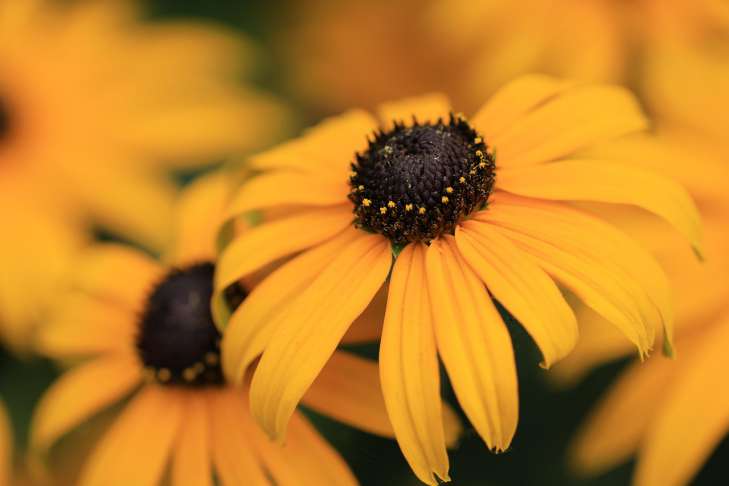Rudbeckia: Health Benefits
Grows on any soil (except for heavy and acidic soils, which you will first need to neutralize with dolomite flour).
Rudbeckia feels great in open areas under the scorching rays of the sun.
Can withstand drought (up to 5 – 7 days without watering).
What does rudbeckia like
Rudbeckia loves watering, so you can even water it twice: in the morning and in the evening.
Remove weeds, loosen the soil around the bush and remove faded flower buds.

If you have a tall variety of rudbeckia growing in your garden, be sure to use different types of supports and trellises to tie up tall and not very strong rudbeckia stems.
Do I need to prune rudbeckia
Regular pruning will not only not harm the plant, but will also help Rudbeckia dissected to bloom more.
When to replant rudbeckia
For successful transplantation of dissected rudbeckia, favorable seasons are early to mid-spring and mid-to-late autumn, when the plant is less active.
Choose a location with well-drained soil and partial to full sun.
Before replanting, lightly loosen the roots to stimulate growth.
How often should you water rudbeckiа
Unlike cold weather, rudbeckia tolerates drought and high air temperatures very poorly.
Therefore, in order to prevent the death of the plant, it needs to be watered often.
In summer, when it is very hot, you may even need to water twice a day - in the morning and in the evening.
How do rudbeckias reproduce
Reproduction: almost all rudbeckias, except for terry varieties of perennial species, are propagated by seeds, which remain viable for 3 years.
Perennial species can reproduce by dividing the rhizome.
